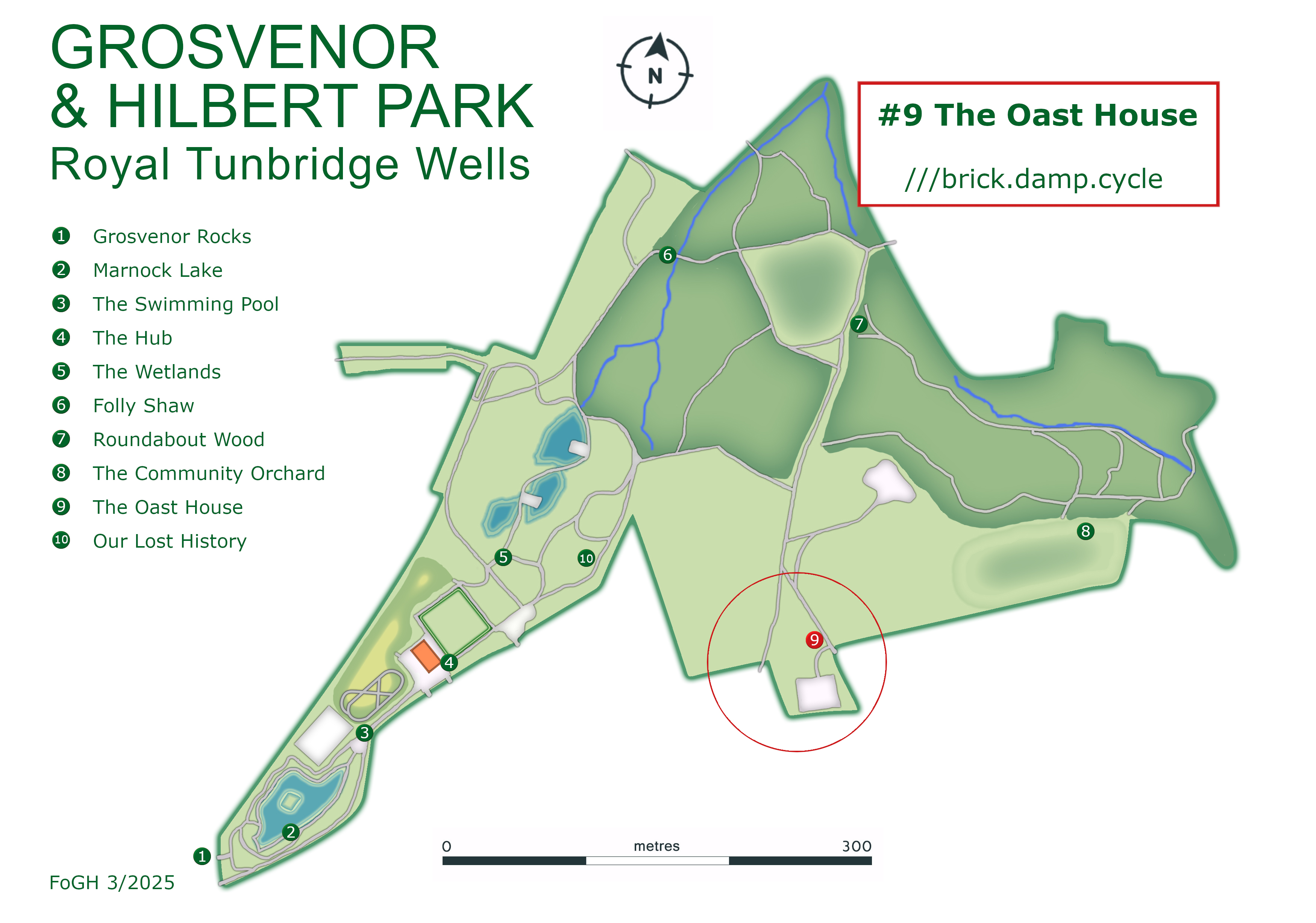
The Oast House
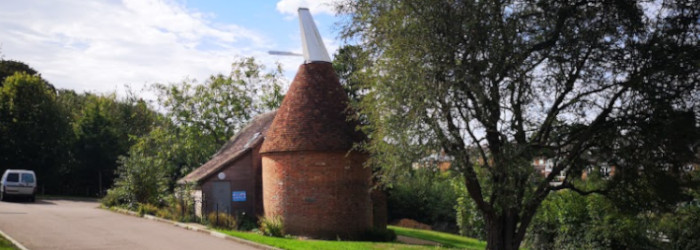
This characteristic mid-19th century Kentish Oast House was part of Charity Farm, which was on this site from the mid-19th century. It was once used for drying and storing hops, which were grown on the farm.
The round section is the kiln, where hops were dried above a charcoal fired furnace on the ground floor. The steep pitched roof allows hot air to be drawn up through the hops and out through the white-painted wooden cowl. This pivots to control air extraction and to stop rain from getting in. The dried hops were cooled and stored in the barn section.
The oast house was included in land donated to the council in 1936 by Councillor Strange, who requested that it was used as part of Hilbert Recreation Ground. It was converted into changing rooms for the football teams that play in the park and restored in 2015 during the Heritage Lottery regeneration.
Just For Kids

The oast house was once used to dry hops which are then used to flavour beer - Yuk!
Do you have a favourite drink?
If you are following the 'brass-rubbing' trail you'll find a spade at the bottom of the slope, near the exit to Dorking Road. If you've been following since the start of the trail, well done, and this is the last one!
Charity Farm
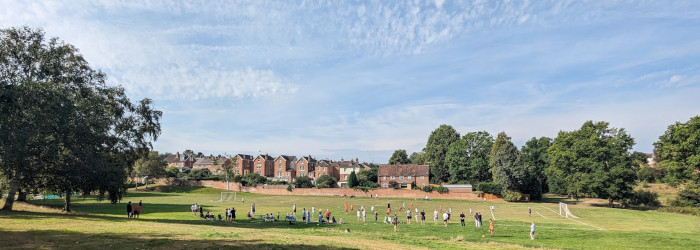
Before the park and surrounding housing, this area was part of a 73 acre farm, called Lipscomb Farm on a tithe map in 1838. But it was more widely known as Charity Farm, because it was owned by John Beanes Charity, which was for the benefit of non-conformist ministers and the poor in Guildford, Dorking and Surrey. This became known as the Dorking Charity Estate, which gave rise to the names Dorking Road and Charity Farm Allotments (on King George V Hill).
The 1838 map shows a mixed farm, with fields marked as arable, pasture and meadow. Pastures are grazed but not mown - the meadow grass is cut for hay, which is dried, stored and fed to livestock in winter. There is an orchard and three fields of hops, which were a profitable crop in the 19th century. An 1891 auction shows that the animals kept included horses, cattle, sheep and pigs.
King George's Field
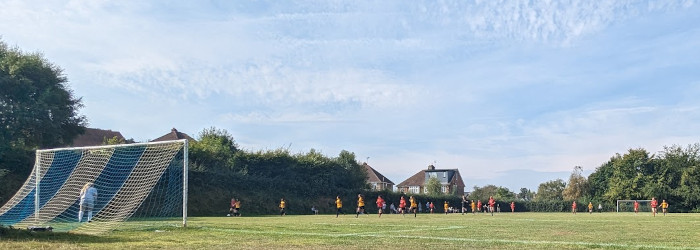
The football pitches were built from 1936 to 1938 by local unemployed men engaged by Tunbridge Wells Council of Service, a group of social and charitable organisations. They decided to actively provide work for the unemployed by paying their wages, and the townspeople donated generously, many by monthly subscription. The Borough Council contributed the materials and supervised the work. The lower football pitch was completed after the war and opened in 1949.
There is a full-size pitch (the lower one) and an intermediate one (the top pitch). There was originally a junior football pitch, which is now mostly the skate park.
The pitches form a 'King George's Field', named for King George V, founder of the National Playing Fields Association, now Fields in Trust. A grant of £200 from King George's Field Foundation helped to build the pitches, shown by the heraldic panels on the gate pillars, installed in 1939. These panels both bear King George V's royal cipher. The left panel has a crowned lion and the right a crowned unicorn, both supporting shields bearing the Royal Arms.
What Next: Our Lost History
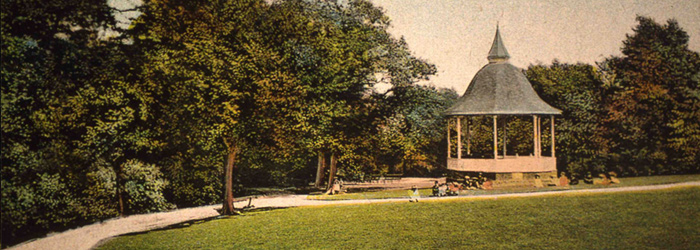
One stop to go, cross the playing field or follow the path back towards the wetlands where we will consider some aspects of our lost history.
